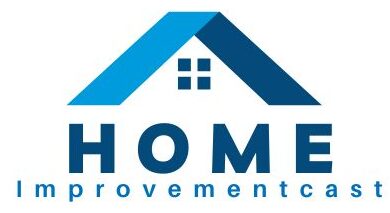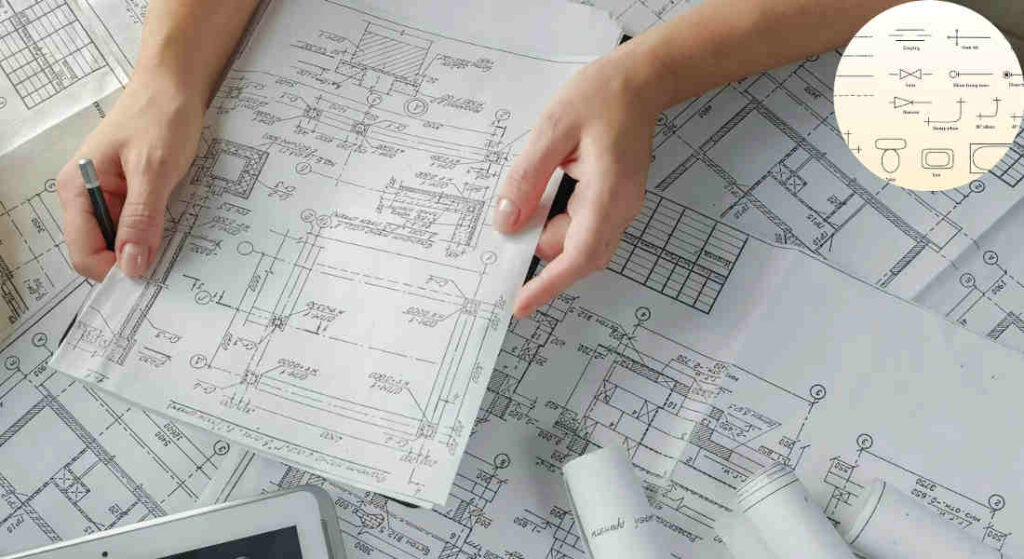Understanding how to read home plumbing plans is an invaluable skill, whether you’re a homeowner embarking on DIY renovations or a professional contractor managing large-scale plumbing projects. Plumbing plans are more than just lines and symbols on paper—they’re the blueprint to one of the most vital systems in any home. They ensure proper water supply, effective drainage, and compliance with building codes.
What Are Home Plumbing Plans?
Plumbing plans are detailed visual representations of a home’s plumbing system. They serve as a guide for plumbers, contractors, and even homeowners to understand how water flows in, around, and out of a house.
Components of Plumbing Plans
A well-designed plumbing plan includes several key elements:
- Pipes: These show the pathways for water supply (hot and cold), drainage, and gas lines.
- Fixtures: These represent critical points like sinks, toilets, showers, and bathtubs.
- Vents: Vents ensure proper air circulation within the drainage system, preventing sewer gas buildup.
- Drains: These direct wastewater out of the home to the sewer or septic system.
- Gas Lines: Indicated separately for homes with gas-powered appliances or heating systems.
The Purpose of Plumbing Plans
Plumbing plans are essential for several reasons:
- Efficient Water Flow: Proper planning ensures water reaches all fixtures with adequate pressure.
- Waste Disposal: Drainage systems are designed to remove wastewater while preventing clogs.
- Compliance: Plans ensure the plumbing system meets local building codes and safety regulations.
When created by professionals, plumbing plans eliminate guesswork and minimise errors during construction or renovation projects.
Why Learning How to Read Home Plumbing Plans Matters
You might wonder, “Why should I bother learning how to read plumbing plans?” The answer is simple: it saves time, money, and stress.
You may also read (house with galvanized plumbing).
Benefits for Homeowners
As a homeowner, knowing how to read plumbing plans allows you to:
- Troubleshoot Plumbing Issues: If there’s a leak or clog, you can locate the problem quickly.
- Plan Renovations: Whether you’re installing a new bathroom or upgrading your kitchen, understanding plumbing plans helps you avoid costly mistakes.
- Communicate with Professionals: When discussing changes or repairs with a plumber, you’ll know exactly what they mean.
Benefits for Plumbers and Contractors
For professionals, plumbing plans are critical for:
- Code Compliance: Ensuring installations meet local building and safety standards.
- Efficient Installation: Planning pipe routes and fixture placements to save time.
- Troubleshooting: Quickly identifying problem areas and potential fixes.
By understanding plumbing blueprints, both homeowners and professionals can work smarter—not harder—when maintaining or upgrading plumbing systems.
Key Elements of Home Plumbing Plans
To effectively read plumbing plans, you need to understand their main components. Below, we’ll break down the most critical elements.
Pipe Types and Sizes
- Cold Water Pipes: Typically marked in blue.
- Hot Water Pipes: Indicated in red.
- Waste Pipes: Used for drainage and often shown in black or grey.
- Gas Lines: Represented by dashed lines or specific symbols.
- Pipe Sizes: Noted with a diameter symbol, such as Ø50 (50mm).
Fixtures
Common fixtures include:
- Toilets, Sinks, Showers, and Bathtubs: Represented by unique symbols on the plan.
- Appliances: Washing machines, dishwashers, and water heaters are also marked for easy identification.
Water Supply Lines
- Cold Water Lines: Show the flow of water from the main supply to fixtures.
- Hot Water Lines: Traceable from the water heater to fixtures requiring hot water.
Wastewater Flow
- Drainage Pipes: Indicate how wastewater flows out of the home.
- Inspection Openings: Shown for maintenance and troubleshooting.
- Drainage Slopes: Ensures smooth flow and prevents clogs.
Venting Systems
- Vent Pipes: Prevent sewer gases from entering the home.
- Vent Stacks: Vertical pipes that release gases through the roof.
You may also read (have no hot water).
Materials and Symbols
- Common materials include PVC, copper, and PEX pipes.
- Symbols for pipes, fixtures, and valves are crucial for accurately interpreting the plans.
Here’s a quick reference table of common plumbing symbols:
symbol represents
Circle with an “S” Sink
Square with “W“ Washing Machine
Dashed Line Gas Line
Arrowed Line Water Flow Direction
Step-by-Step Guide: How to Read Home Plumbing Plans Like a Pro
Now that you know the basics, let’s dive into a practical guide to reading plumbing plans.
Review the Legend and Scale
Start by looking at the legend. It explains the symbols and lines used in the plan. Next, check the scale, which helps you interpret distances correctly. For example, 1cm on the plan might equal 1 meter in real life.
Identify Key Fixtures
Identify key areas such as bathrooms, kitchens, and laundry rooms. Mark the positions of toilets, sinks, and appliances.
Trace Water Supply Lines
Follow the blue (cold) and red (hot) lines to see how water reaches each fixture. This step helps you identify potential weak points or areas needing improvement.
Understand Wastewater Flow
Study the drainage lines. Ensure they slope downward correctly to avoid backflow issues.
Examine Venting
Locate vent pipes on the plan. They usually connect to the roof or vent stacks. Proper venting prevents pressure imbalances and the buildup of sewer gas.
Check Pipe Sizes and Materials
Verify that the pipe diameters match the system’s requirements. Check material notations (e.g., PVC or copper) for compliance and durability.
Additional Tips
- Use color-coded plans whenever possible.
- Look for valve locations, which are critical for shutting off water during emergencies.
Common Symbols and Labels in Plumbing Plans
Plumbing plans use standardized symbols to represent fixtures, pipes, vents, and appliances. Here are some examples:
- Sinks: Circle with an “S.”
- Toilets: A circle with a “T.”
- Showers: A square with diagonal lines.
- Gas Lines: Dashed lines.
- Main Drain Lines: Thick black lines.
Tips for Memorizing Symbols
- Keep a plumbing symbol guide handy.
- Practice reading plans with a legend until you’re familiar with common symbols.
Practical Applications: Using Plumbing Plans for Homeowners and Professionals
For Homeowners
- DIY Repairs: Use plumbing plans to locate pipes and fixtures before repairs.
- Renovations: Plan new installations without disrupting existing systems.
For Professionals
- Installation: Follow plans to install pipes and fixtures efficiently.
- Troubleshooting: Quickly locate problem areas using the plan.
Tips for Creating and Maintaining Accurate Plumbing Plans
- Work with Professionals: Hire licensed plumbers for initial designs.
- Use Tools: Scaled drawings and color-coded lines improve accuracy.
- Document Changes: Keep plans updated after renovations or repairs.
You may also read (how to locate leaks in home pool plumbing).






